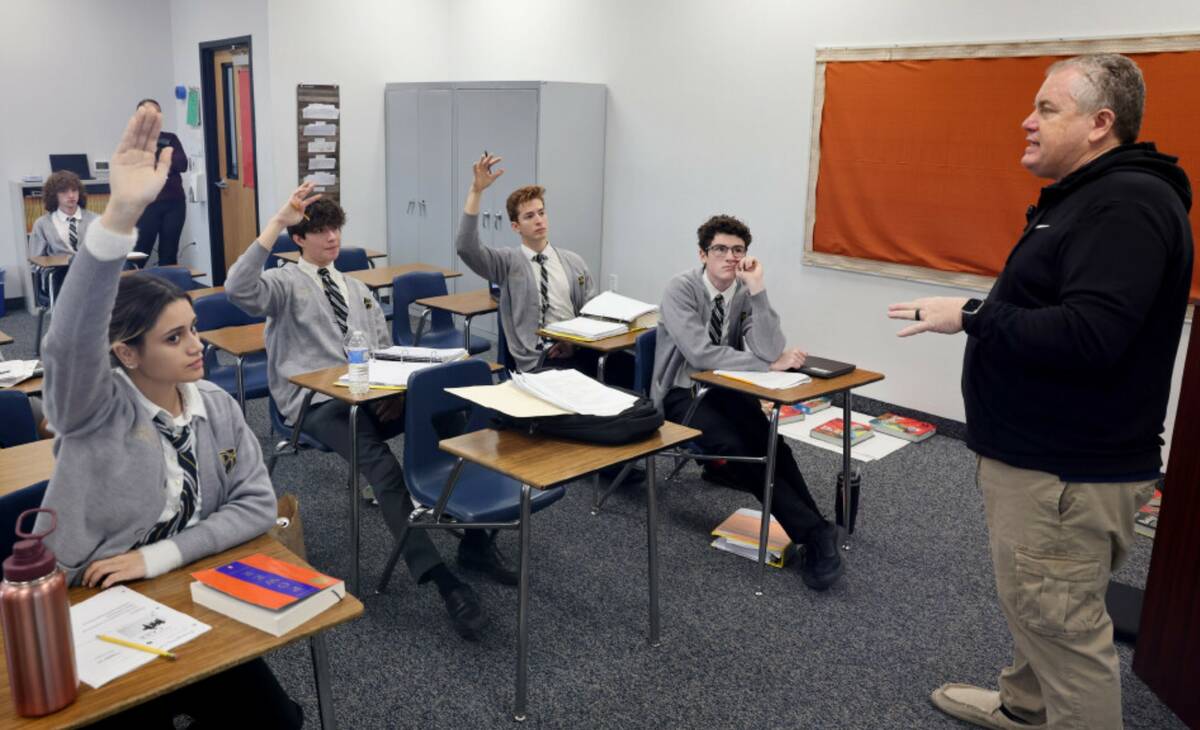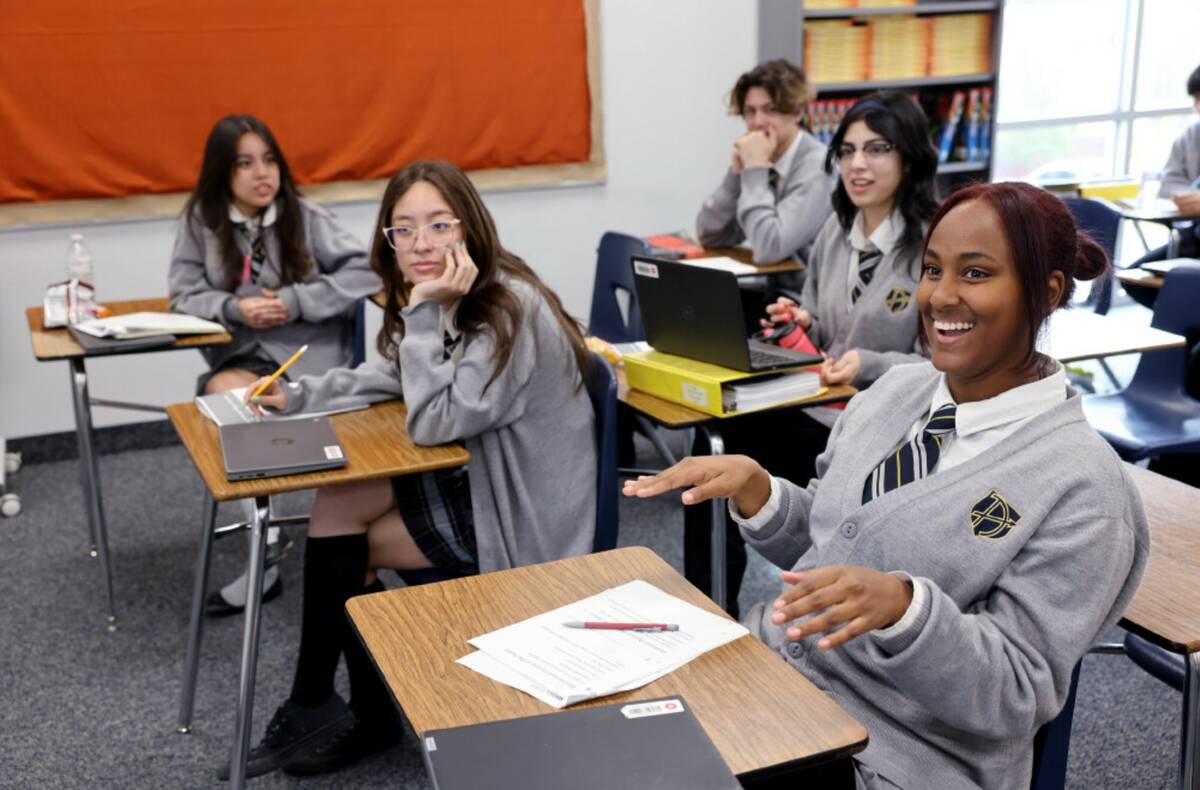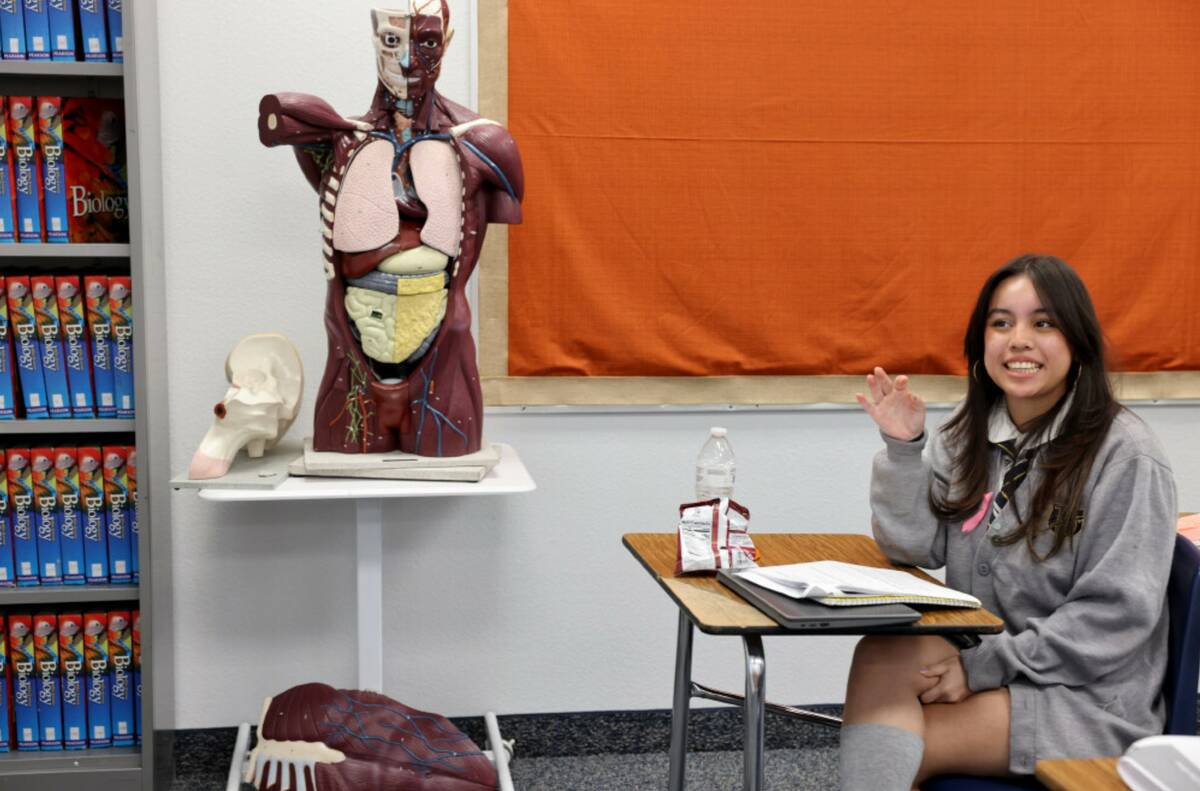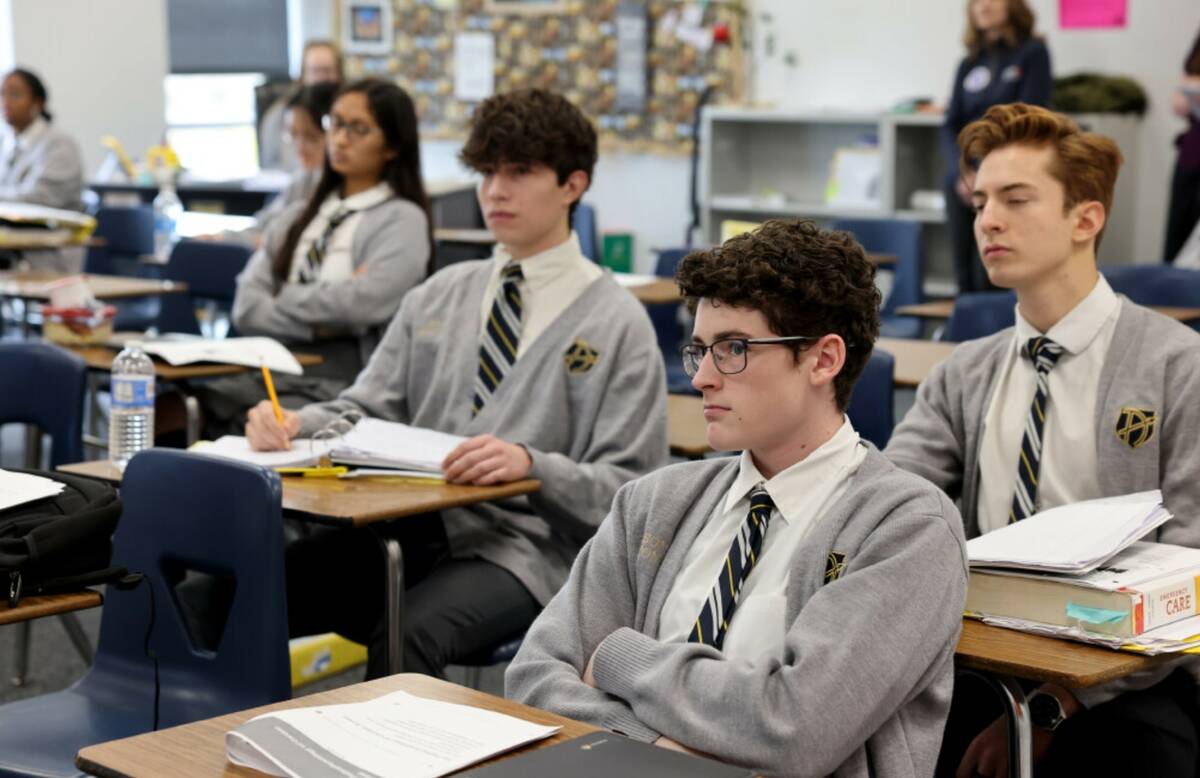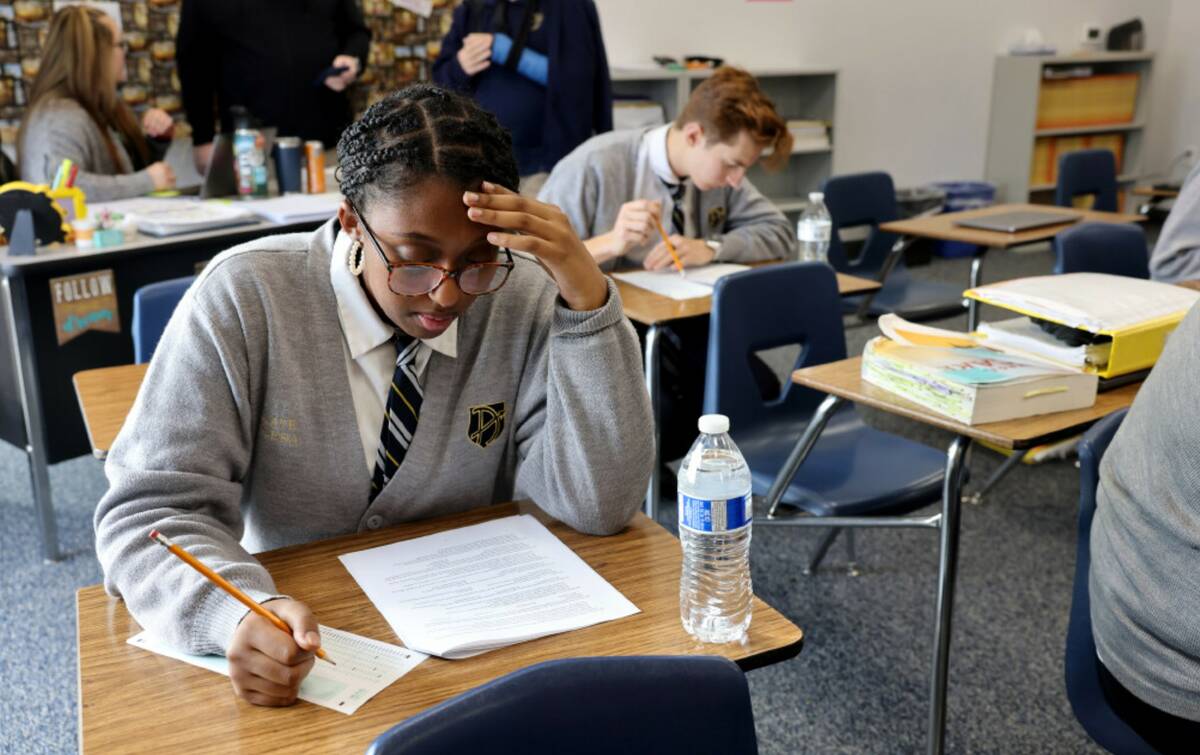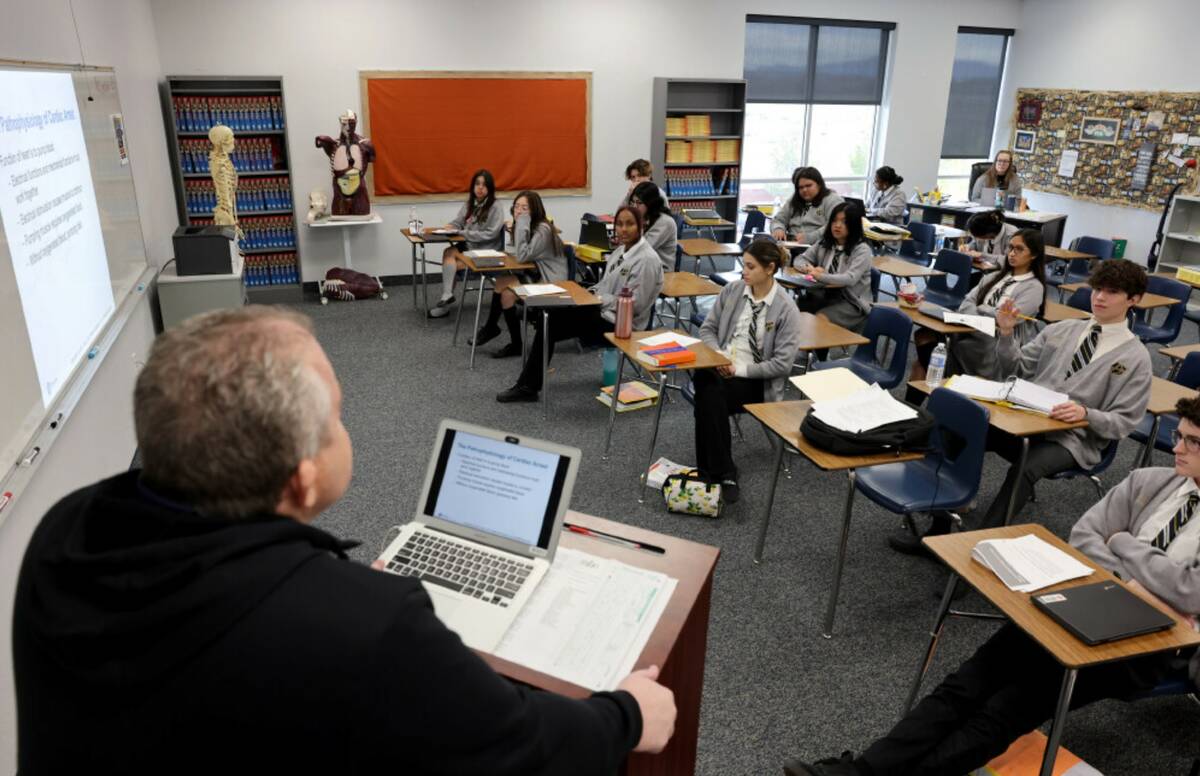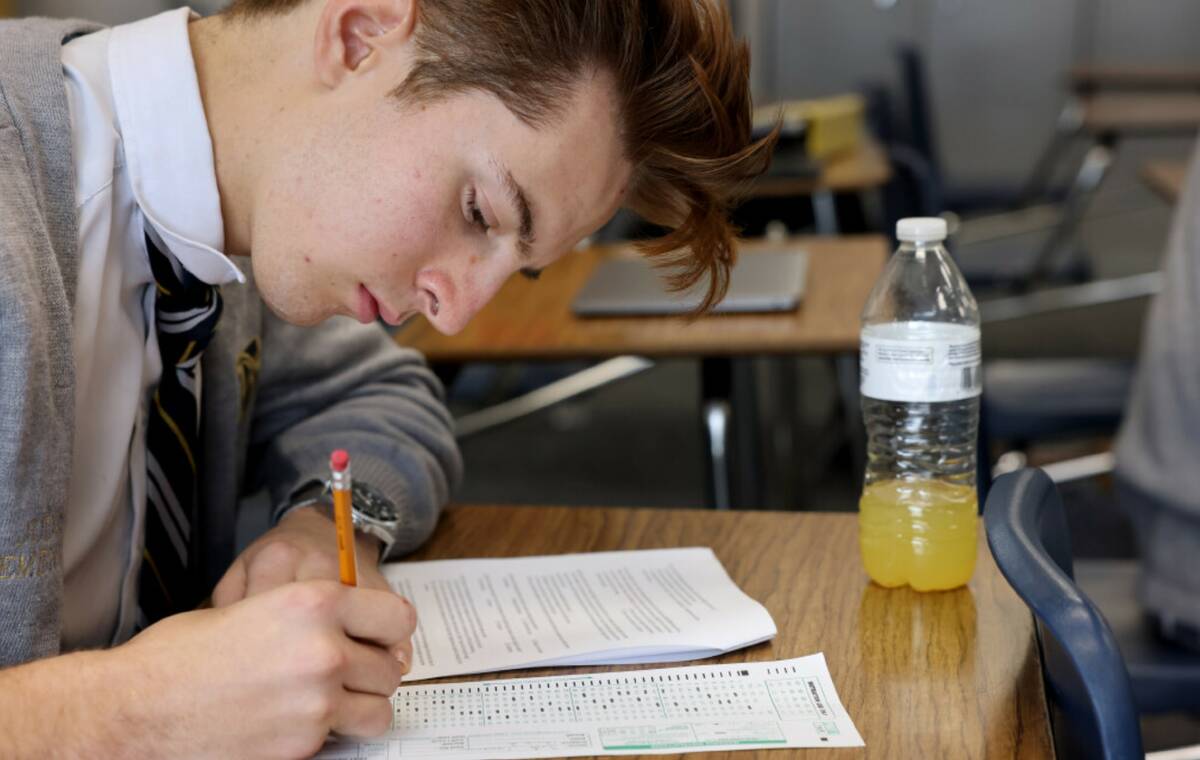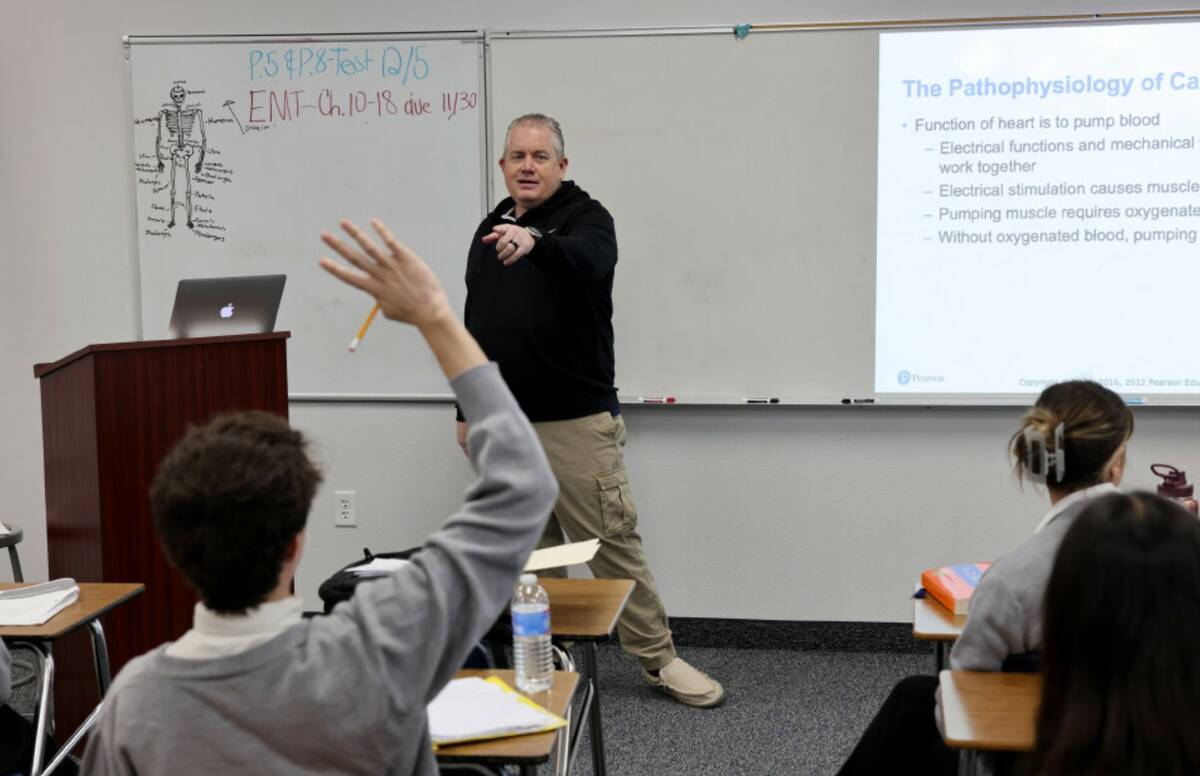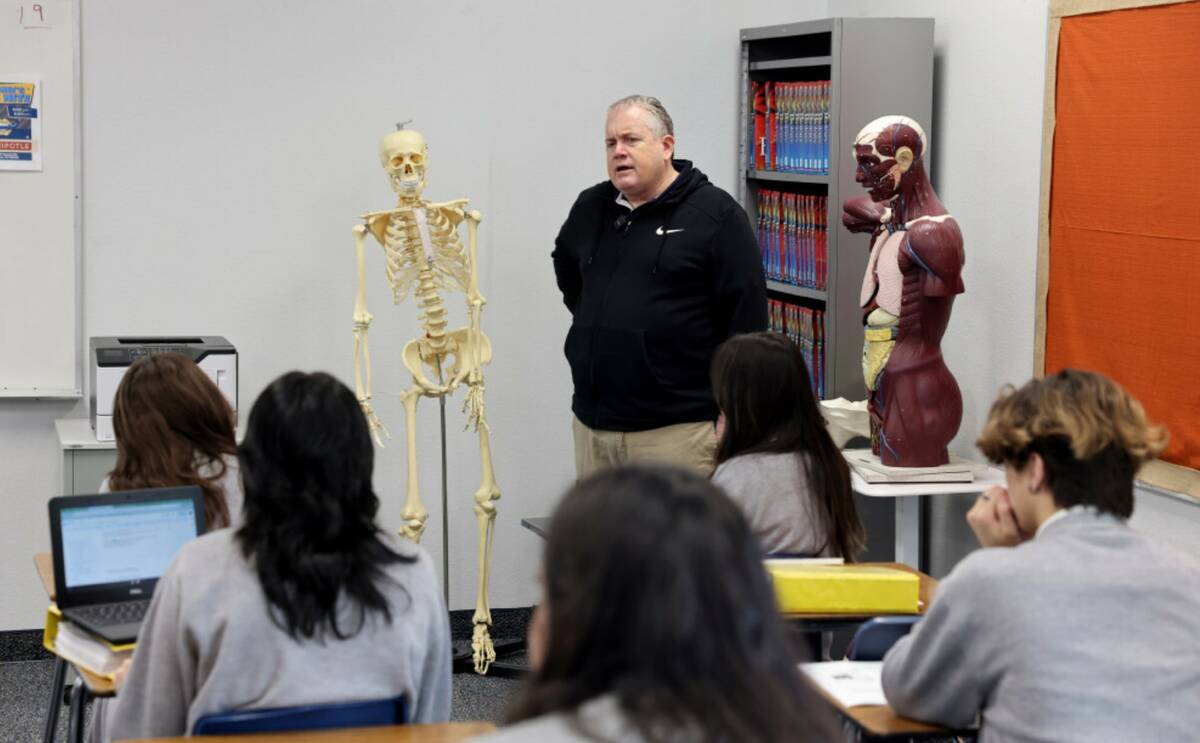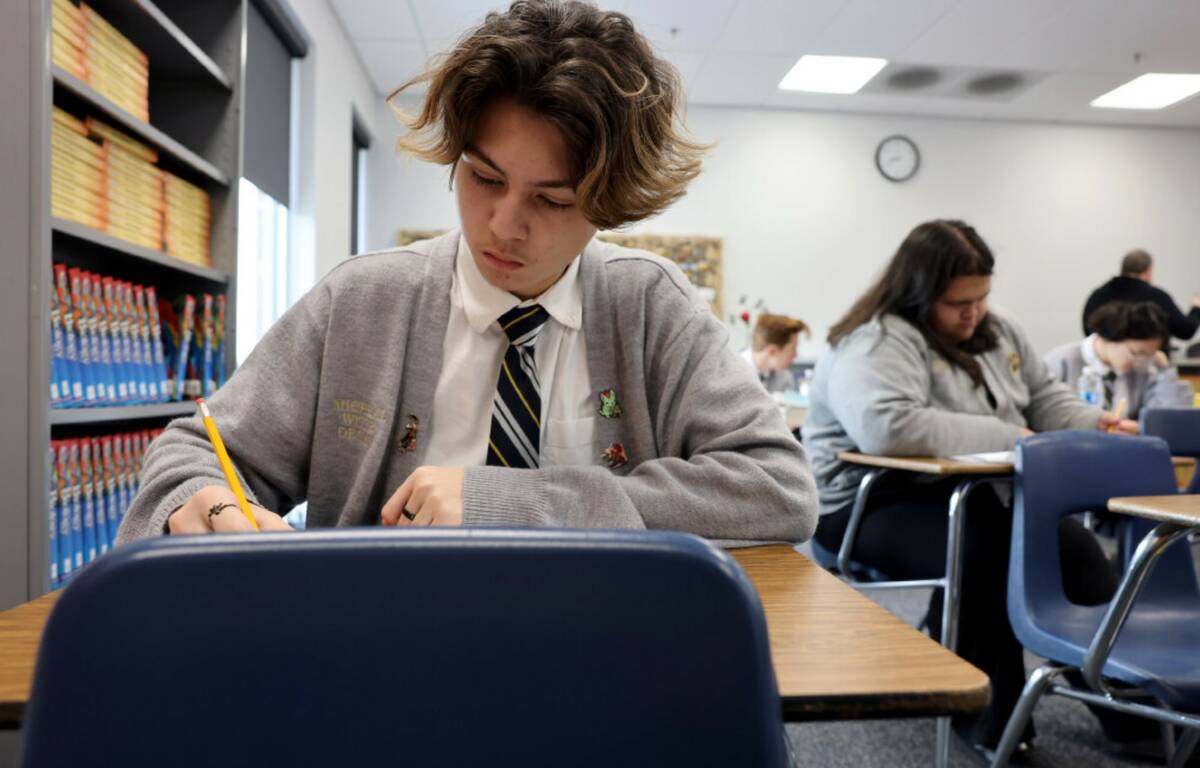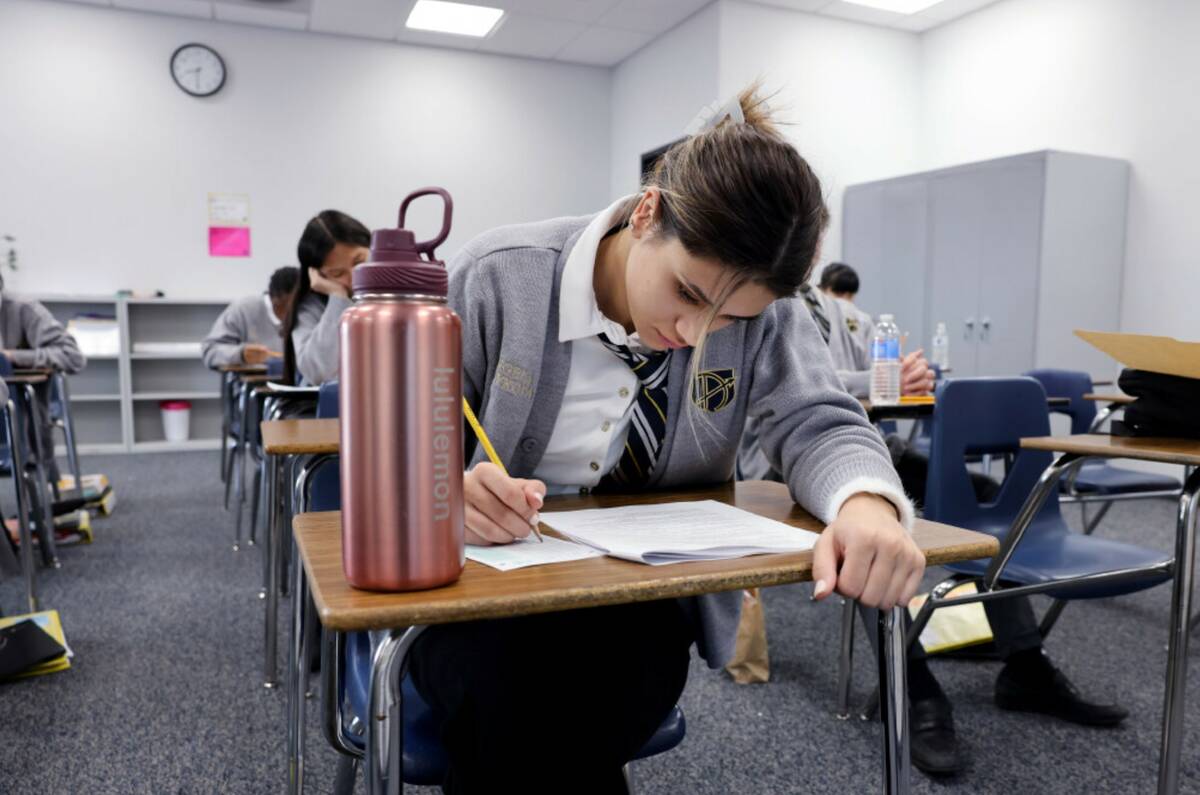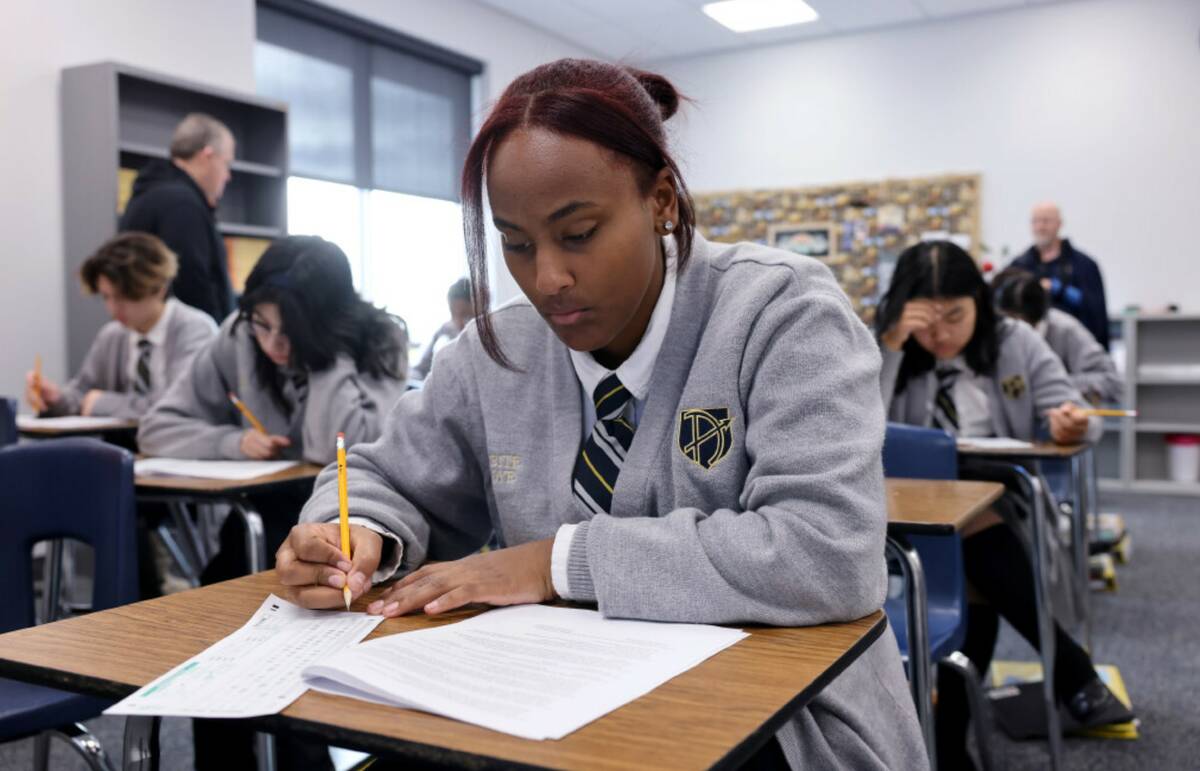‘You have to know your stuff’: Charter school prepares students for EMT jobs
Za’Nay Brooks wants to work as an emergency medical technician shortly after graduating high school, using it as a stepping stone to building her career.
“I’ve always been interested in medicine since I was a kid,” the 17-year old said.
Brooks — a high school senior — originally wanted to become a doctor, but she decided instead to pursue becoming a paramedic.
Brooks said few people of color are in the profession, and it would be a big accomplishment for her and her family.
The first step to getting there was enrolling in a yearlong emergency medical technician, or EMT, class at her school.
Brooks said the class requires teamwork and students always have to be prepared.
“You have to know your stuff because you will be called on,” she said.
Amplus Academy, a public charter school in southwest Las Vegas, offers an EMT class through a partnership with the MountainView Hospital Paramedic Institute.
It’s the second year of the partnership and about 19 students are enrolled in the class. Once a student finishes the class and passes a national exam, that student will become a certified EMT.
A handful of other Las Vegas Valley schools also offer EMT programs, including three in the Clark County School District: Rancho High School, Bonanza High School and Veterans Tribute Career & Technical Academy.
Meeting a need
Nationwide, the number of job openings for EMTs is expected to grow 5 percent over the next decade — faster than average, according to the U.S. Bureau of Labor Statistics. Median pay was $36,680 last year.
MountainView Hospital Paramedic Institute was created in 2020. In order to have good paramedic school candidates, it’s a logical step to start young, Director Troy Tuke said.
Amplus Academy Principal Sarah Barlow said that she loves the partnership with the Paramedic Institute and that it’s a good example of how it can benefit all involved.
For students, she said, “It changes the trajectory of their life.”
The EMT class motivates students to do more and rise to the occasion amid the “very challenging” program, she said.
Because of a teacher shortage, there aren’t educators who have the qualifications needed to instruct the EMT class, Barlow said, and the Paramedic Institute fills the gap.
Barlow said the school pays attention to community needs as the Las Vegas Valley grows. She said it would be a great honor for the school’s graduates to become local first responders.
Students who are interested in the EMT program start by taking a health science class during their junior year of high school.
EMT student Ryan Martinez, 17, said the program opens a lot of doors for options after high school and college.
“I think I’ll definitely put it to use,” he said.
Ayleen Aguiar, 17, said the class is an introduction to the medical field, a career path she plans to pursue.
She said she’s not sure she wants to work as an EMT, but the information will be valuable to use in college.
Students have covered topics in class such as medications, trauma assessment, and cardiac and respiratory emergencies.
‘Very different setting’
Mark Calabrese, an instructor with the Paramedic Institute and vice president of operations for Community Ambulance, teaches the EMT class at Amplus Academy. It’s his second year as the program’s instructor.
He said he has taught classes for many years, but teaching in a high school is a “very different setting.”
Calabrese said he discovered that he enjoys teaching high school students more than adults, noting the hight schoolers have good energy and take constructive feedback.
In addition to the academic material, Calabrese said the class teaches students things such as accountability, how to study, building their own confidence and challenging themselves in order to reach their individual goals.
Calabrese said he treats students like employees and makes it clear that it’s unacceptable to arrive late to class.
Amplus EMT students spend two class periods each day in the class, ranging from about 1 hour, 40 minutes to 2 hours, 20 minutes.
Saturday labs
Labs, which typically last for six to seven hours, are also held once or twice a month on Saturdays at Community Ambulance.
Brooks, one of the students in the program, said she likes the Saturday labs and that she’s someone who needs to see things in order to understand them.
Calabrese said interacting with students in a lab setting builds a bond and that he views them like they’re his own children.
“I found a lot of them want to be pushed in their own way,” he said, noting that was initially surprising to him.
He said that the Saturday lab time is about learning skills such as oxygen administration and patient assessment. Students also learn how to use equipment that they would likely encounter as an EMT.
As part of the program, students complete 24 hours of clinical time — two 12-hour shifts — during a ride-along with a regular working crew on an ambulance.
Calabrese said that some of his students are interested in health care, but it’s also OK if they end up deciding that becoming an EMT isn’t for them.
The class provides a baseline of knowledge that students can use later if they’re a patient in an emergency room or their family member is, he said, adding that it will help with understanding the “language of health care.”
Calabrese said Community Ambulance will offer jobs to students who complete the program and pass the national exam.
Learning about cardiac arrest
During a lesson Wednesday in class, students were learning about the “pathophysiology” of cardiac arrest. Calabrese was calling on students to answer questions.
The thing about health care, he told students at one point during class, is that “things can happen to you and they don’t find a cause.”
With abdominal pain, for instance, a patient may not have a life-threatening condition, but a medical provider can’t tell them what’s causing the pain, Calabrese said.
That can be frustrating for people because they want to know the “why,” he said.
Calabrese also told students that even if they don’t go into health care, they’re now CPR certified and they’ll have the ability to use it if someone they know goes into cardiac arrest.
Contact Julie Wootton-Greener at jgreener@reviewjournal.com. Follow @julieswootton on X.



